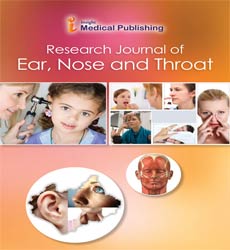Abstract
Hearing Organ Assessment using Pure-Tone Audiometry in Children and Adolescents with Peripheral Paralysis of the Facial Nerve
Introduction: The facial nerve lies in the immediate vicinity of the hearing organ. The nerve to the stapedius, a branch of the facial nerve (tympanic branch), innervates the muscle responsible for the acoustic reflex. Based on these anatomical conditions, one can assume that the peripheral damage of the facial nerve may cause hearing impairment. The aim of this study is to assess hearing in children and adolescents with diagnosed peripheral facial nerve palsy with the use of pure-tone audiometry.
Materials and methods: 55 patients with peripheral facial nerve palsy aged 3 to 17 were examined in this study. The studied group consisted of 19 boys and 36 girls. The pure-tone audiometry exam was performed with the ascending method and with tone frequency ranging from 0.25-4 kHz. The threshold curves were determined bilaterally for bone and air conduction. Audiometry results acquired from the ear on the side healthy side were used as a control group and compared with the results obtained from ears on the side affected by FNP.
Results: The average hearing threshold of all patients was bilaterally within the normal range, both on the side affected by FNP and on the opposite (healthy) side. The t-student test showed no significant difference between the affected and healthy sides in the average hearing threshold in each of the selected frequencies. Conclusion: Results of the subjective pure-tone audiometry showed that none of the patients presented with hypoacusis on the side where facial nerve palsy was diagnosed.
Author(s): Waclaw Kopala and Andrzej Kukwa
Abstract | Full-Text | PDF
Share This Article
Google Scholar citation report
Citations : 16
Research Journal of Ear Nose and Throat received 16 citations as per Google Scholar report
Abstracted/Indexed in
- Google Scholar
Open Access Journals
- Aquaculture & Veterinary Science
- Chemistry & Chemical Sciences
- Clinical Sciences
- Engineering
- General Science
- Genetics & Molecular Biology
- Health Care & Nursing
- Immunology & Microbiology
- Materials Science
- Mathematics & Physics
- Medical Sciences
- Neurology & Psychiatry
- Oncology & Cancer Science
- Pharmaceutical Sciences
